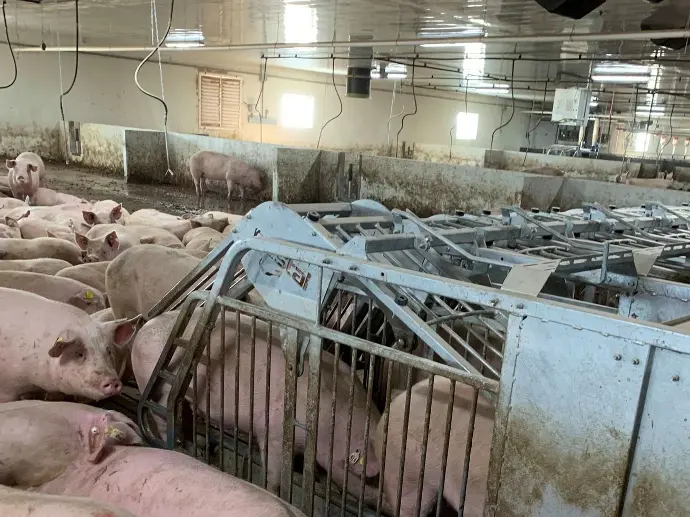Farm Ventilation
Explore by Farm Ventilation Categories
Ventilating farms in the harsh Canadian environment requires systems that can handle extreme temperatures and high humidity. There are many key considerations and strategies for ensuring effective ventilation under such conditions.

Wall Fans
In the world of agriculture, maintaining optimal air quality and temperature is paramount to ensuring the health of livestock.

Chimney Ventilation
Chimney ventilation in livestock barns improves air quality, controls temperature and humidity, and reduces energy costs.

Recirculation
Efficient air movement is essential in agricultural environments to maintain optimal conditions for livestock.

Ceiling Inlets
Insulated ceiling inlets allow fresh air to enter from attic, promoting better air distribution and reducing drafts at animal level, which helps maintain a consistent indoor climate and improves ventilation efficiency.

Wall Inlets
Insulated wall air inlets provide efficient airflow control while minimizing heat loss, ensuring optimal ventilation in harsh climates.

Light Traps
Light traps prevent external light from entering building while maintaining proper ventilation, helping to control the lighting environment for optimal animal health and productivity.
Farm Ventilation
Farm ventilation is the process of introducing and distributing fresh outdoor air into farm buildings to ensure optimal conditions for livestock and productivity. It involves using fans, inlets, and ducts to regulate temperature, humidity, and air quality. Proper ventilation helps maintain a healthy environment, reducing disease and stress in animals, leading to improved growth, milk production, and overall farm efficiency. Efficient systems can also lower energy costs and enhance farm management.


Why Are Ventilation Systems Important to Farms?
Ventilation systems are vital to farms because they ensure a healthy and productive environment for livestock and crops by regulating temperature, humidity, and air quality. Proper ventilation removes harmful gases and excess moisture, reducing the risk of respiratory issues and diseases in animals while preventing mold and bacterial growth. Additionally, by maintaining optimal conditions, ventilation systems help enhance animal comfort, leading to better growth rates, higher productivity, and overall farm efficiency, especially in regions with extreme climates.
How to Design Farm Ventilation Systems?
Depending on the operation, we can help design the ventilation system using our in-house expertise, selecting the right equipment such as fans, air inlets, and controls to ensure optimal airflow and climate control. Or, reach out to our trusted partners, who can provide specialized products and design services to create a customized ventilation solution tailored to the farm's specific requirements.

Innovative. Simple. Built to Last.